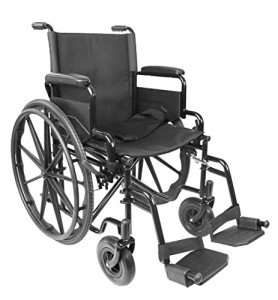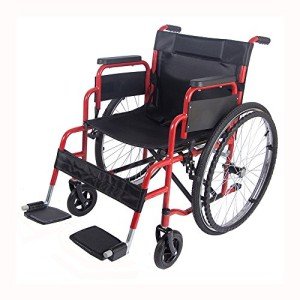Five Killer Quora Answers To How To Self Propel A Wheelchair
Branden Villare…
0
2
01.07 07:59
 how to self propel a wheelchair (https://mcleod-mcneill-3.hubstack.net) to Self Propeller a Wheelchair
how to self propel a wheelchair (https://mcleod-mcneill-3.hubstack.net) to Self Propeller a Wheelchair Learning to self-propel a wheelchair opens the door to a whole new realm of independence. But, it takes the right body posture and practice to master this.
Learning to self-propel a wheelchair opens the door to a whole new realm of independence. But, it takes the right body posture and practice to master this.Proper body positioning requires a precise grip and pushing technique. This article will concentrate on these skills, as well as other important aspects of wheelchair propulsion.
Hand Positioning
Properly pushing a wheelchair with the hands is an important component of self-propulsion. Begin with accuracy and then progress to speed. Squatting while pushing can improve stability and comfort for users particularly those who have lower body restrictions. The hands should be positioned to be in line with the speed of the wheel and to push evenly with both hands, but without wrapping the thumbs around the hand-rims. This is a common mistake, as it reduces effectiveness and increases the amount of force required for each stroke.
The recovery path of the hands should be in a relaxed pendular fashion below the hand-rims at the end of each propelling cycle, to avoid contact with the rear wheels (a "semi-circular" recovery pattern). This reduces the strain on the shoulders, as well as limiting the number of strokes and length of each stroke at a minimum.
For surfaces that are more difficult to maneuver, it is sometimes recommended that wheelchair users make long strokes and a full recovery (like the hand's position on a clock). This can help reduce shoulder injury due to repeated motion, but can increase the load on shoulders in each cycle.
Utilizing the same position for both propelling and braking can also help to minimize shoulder injuries. If the user of a wheelchair can keep a steady rhythm for both of these actions, they will be better able to manage the forces and adapt to the changes in terrain.
On slick or muddy surfaces it is necessary to lean slightly forward when propelling to prevent the wheels from sinking in the ground and tipping. You should test various trunk leans in order to find the right balance between too much and too little lean. Regular practice will increase your confidence and proficiency. Wheelchair propulsion is a vital ability for those who have mobility issues and can provide a new world of freedom. With the proper technique and the right equipment, as well as some education anyone can be taught to drive their own manual wheelchair easily! This entry was filed under News and tagged wheelchair.
Foot Positioning
It is crucial to ensure that the user's feet are correctly positioned to ensure stability. It's not always the best choice for a wheelchair with feet that are not close enough since this makes it very difficult to self propel. However, sometimes it is necessary to do so to navigate difficult terrain. For instance, if the client is going down a very steep ramp, or even over one of our fantastic National Parks or beaches, then the wheelchair must have wheels that can push up and over them in a way that allows the user to move themselves forwards. The front wheels should be positioned in the manner illustrated below.
The user can push the wheels together by simply grasping the rims. This requires a lot of upper body strength and is very slow however it is possible and can allow people who would otherwise not be able to get up or down hills to achieve this.
It is also crucial for the client to be able to do wheelies, so that they can get over obstacles, such as curbs or other people. In this position, the user will place their left foot on top of the right, so that they can lift themselves up and over the obstacle. The person will then move their right leg up and over the obstacle, while pushing with their left hand. This is known as the crabwalk. It is an effective way to move a wheelchair across some of our most challenging terrain.
They are a great choice for disabled or injured people who want to move around without needing help. They are ultra lightweight self propelled wheelchair, versatile and foldable to not take up as much space in a home as other mobility aids might take up. They can also be converted into powerchairs by using accessories, such as the E-Motion, giving users the flexibility of being able to use their chair with the added benefit of electric assistance if needed.
Braking
Self-propulsion in a wheelchair is a valuable skill for those who have mobility issues. It lets them navigate various kinds of terrains and situations independently. It helps to build strength in the shoulders and upper arms.
To propel a wheelchair forward the user should apply pressure to the rim of one hand while pulling up on the opposite side. This push-pull action creates momentum that moves the wheelchair in the desired direction. You can alter the speed of the wheelchair by applying more or lesser pressure to the wheels, or by using the hand brakes if they are equipped.
The ideal push cycle should last at minimum three hours. This will reduce the time that the shoulder is being strained, reducing the chance of injury from repetitive strain. The size and width of the back wheels will also influence the speed at which a wheelchair is driven. Larger wheels require more force to move, while smaller wheels are more maneuverable. Wheelchairs could also be designed to have camber, which aligns the rear wheels with biomechanics and maximizes the stability of the lateral side.
Wheelchair users who wish to improve their propulsion skills should practice in a safe location, like a parking lot or a hall that is empty. The aim is to develop long smooth strokes that allow the wheelchair to coast in between strokes.
It's also crucial for the user to practice moving while moving, such as weaving around objects or making turns. This can be achieved by weaving around cones and then transferring to straight-line motions. The more a person practices the more comfortable it will be for them to master this.
self propelled wheelchairs for sale-propelled wheelchairs are an excellent option to help people keep active and doing the things they love. They can provide independence and be a great option to meet with friends and go to the movies, or travel. By learning the proper use of a wheelchair you can get back your independence and get to where you want to be.
Stability
A person who is a wheelchair user who self propelled all terrain wheelchair-props the chair is able to be self propelled wheelchair with attendant brakes-sufficient and go wherever they want to go without having to rely on others. However, it does take a good level of upper body strength to push the wheel along flat surfaces, and even up small hills. This is the reason that many wheelchair users choose to use an attendant controlled chair (also known by the name attendant propelled) like the Action3 NG, or ErgoLite 2, and are driven.
It is important to learn how to hold the rims of your hands on manual wheelchairs correctly to ensure maximum comfort and functionality. We find that many clients use this type of wheelchair with the hand rims too far away from the front. This means they must push further backwards to move their arms. This is not biomechanically efficient and can lead to strain on the shoulders over time.
The ideal hand-propulsion technique is a semi-circular motion where the client is alternating between the push and recovery phase. The push phase requires the user to push down on the casters, which is done with a lot of small strokes. This push pattern also helps to strengthen the shoulder muscles and maintain an appropriate range of motion.
The client should move their hands across the rims until they make contact with the casters once more. This allows for longer strokes, and also reduces friction during the recovery phase. Some wheelchair users slide their hands along the wheels in a smooth arc during this phase, but this isn't as effective and could cause wear on the rims.
The location of the rear wheels to allow self-propulsion is an additional aspect of stability. If the wheel is placed too far forward, then the user could fall off their wheelchair easily. This can make it difficult for them to navigate around obstacles and it's not a good idea for shoulder injuries. In order to decide which wheel is the best for a client, we need to assess their strength, range-of-motion, muscle tone, the state of their orthopedics and other variables in the seating evaluation.
